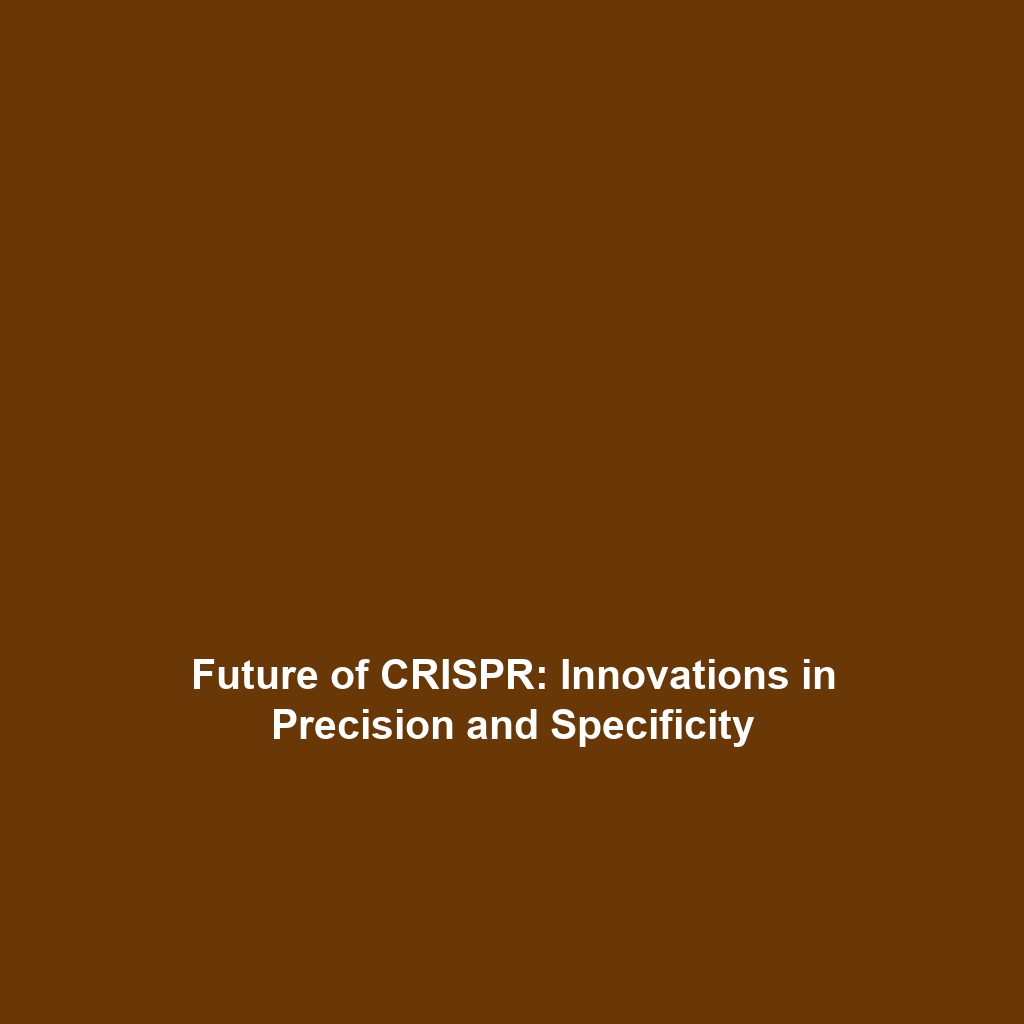Enhancing Productivity Traits: Growth Rate and Meat Quality through CRISPR Gene Editing
CRISPR gene editing technology represents a groundbreaking advancement in agricultural biotechnology, offering innovative solutions to enhance productivity traits such as growth rate and meat quality. By utilizing this precise editing technique, researchers and breeders can create animal and plant varieties that not only grow faster but also exhibit superior quality in meat, ultimately meeting the increasing global food demands. Understanding how CRISPR impacts productivity traits is crucial for the future of sustainable agriculture and food security.
Key Concepts in CRISPR and Productivity Enhancements
To appreciate the significance of CRISPR gene editing in improving productivity traits, it is essential to grasp some key concepts:
- CRISPR-Cas9 Technology: A revolutionary tool that allows for precise alterations to the DNA of organisms, facilitating modifications that enhance growth and quality traits.
- Genomic Selection: The process of predicting the performance of breeding candidates based on genome information, enabled by CRISPR technology.
- Phenotypic Traits: Observable characteristics such as weight, composition, and growth rate that can be enhanced through genetic editing.
These concepts are intertwined with the broader aim of improving agricultural practices and enhancing food production through CRISPR gene editing capabilities.
Applications and Real-World Uses of CRISPR in Quality and Growth
The applications of CRISPR gene editing in increasing productivity traits are myriad, offering tangible benefits in various contexts:
- Growth Rate Enhancement: CRISPR can be utilized to edit genes that regulate growth hormones in livestock, resulting in faster growth rates.
- Improved Meat Quality: By editing genes associated with fat deposition and muscle development, CRISPR allows for the production of meat with improved tenderness and flavor.
- Disease Resistance: CRISPR can enhance resilience in livestock against common diseases, indirectly improving growth rates by reducing health-related setbacks.
These applications demonstrate how CRISPR gene editing is pioneering changes in the production of meat through genetic improvements.
Current Challenges in CRISPR Applications
Despite its potential, there are several challenges associated with increasing productivity traits like growth rate and meat quality via CRISPR gene editing:
- Regulatory Hurdles: The application of CRISPR technology in agriculture faces strict regulatory assessments that may delay its adoption.
- Public Perception: Concerns over genetically modified organisms can hinder acceptance of CRISPR-enhanced products.
- Ethical Considerations: The implications of gene editing raise ethical questions regarding animal welfare and biodiversity.
Addressing these challenges is crucial for the successful integration of CRISPR technology into agricultural practices.
Future Research and Innovations
The future of CRISPR gene editing in enhancing productivity traits is promising, with several innovations on the horizon:
- Next-Generation CRISPR Technologies: Ongoing research into modified CRISPR systems that allow for multiplex editing, enhancing the efficiency of trait improvement.
- Integration with AI: Utilizing artificial intelligence to predict the outcomes of genetic edits could revolutionize breeding strategies.
- Personalized Agriculture: Tailoring CRISPR applications to meet specific environmental conditions and consumer preferences is a significant area of exploration.
These advancements could reshape how we approach agricultural productivity in the coming years.
Conclusion
In summary, the integration of CRISPR gene editing technologies holds significant promise in enhancing productivity traits like growth rate and meat quality. As researchers continue to explore the potential of this transformative tool, overcoming challenges related to regulation, public perception, and ethics will be vital. Stakeholders must remain engaged in discussions regarding the implications of CRISPR to ensure its responsible application in agriculture.
For more insights into CRISPR and its applications in food production, consider exploring our other articles on sustainable agriculture practices and innovations in food technology.
This document is structured to provide clear, concise, and SEO-optimized information about the role of CRISPR gene editing in enhancing productivity traits like growth rate and meat quality. The use of headings, lists, and bolded elements enhances readability and search engine visibility.

Leave a Reply